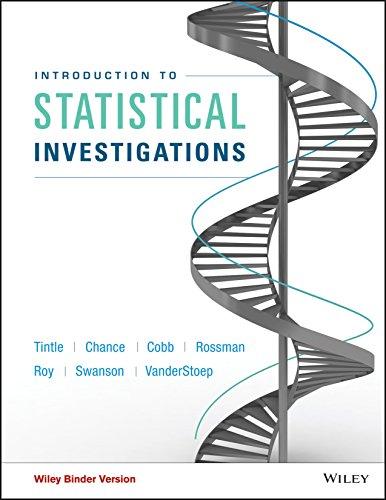a. Describe what the symbol stands for in this context. b. State your null and alternative
Question:
a. Describe what the symbol π stands for in this context.
b. State your null and alternative hypotheses.
c. If the subjects in these studies have no psychic ability, approximately what proportion will identify the correct image? Is this the null hypothesis or the alternative hypothesis?
d. Use an applet to simulate 1,000 repetitions of this study, assuming the null hypothesis to be true. Sketch a labeled graph of the results.
e. Utts reported that Bem and Honorton found a total of 106 “hits” in the 329 sessions. Does this result provide very strong evidence against the null hypothesis? Use the simulation that you carried out in part (d) to find and report a p-value. Based on this p-value, summarize your conclusion in the context of this study and explain your reasoning for having arrived at this conclusion. Be sure that you have used the 3S strategy for assessing the strength of evidence for the research conjecture.
f. Now carry out the same analysis, only instead of simulating the null, use the theory-based (normal approximation) approach for that null distribution. How does the p-value you found using the theory-based approach compare to the one you found using simulation? Does this surprise you? Why or why not?
Step by Step Answer:

Introduction To Statistical Investigations
ISBN: 9781118172148
1st Edition
Authors: Beth L.Chance, George W.Cobb, Allan J.Rossman Nathan Tintle, Todd Swanson Soma Roy





